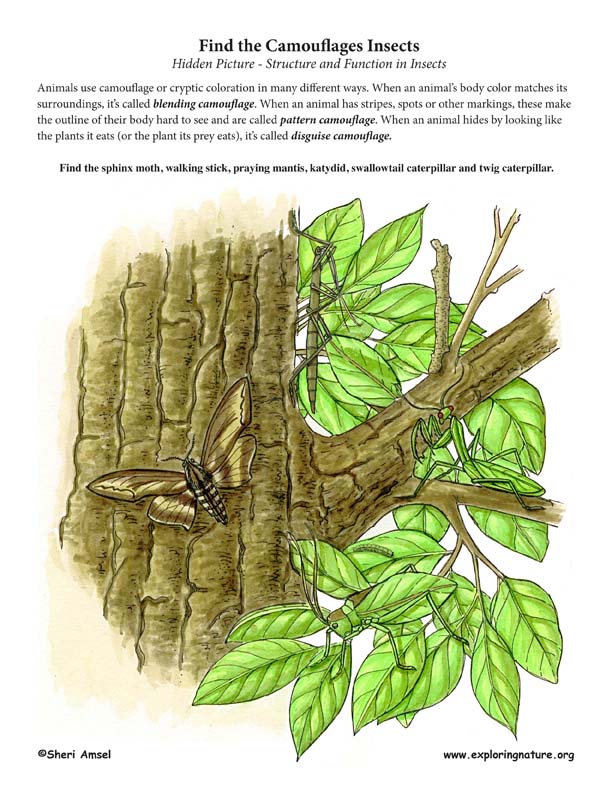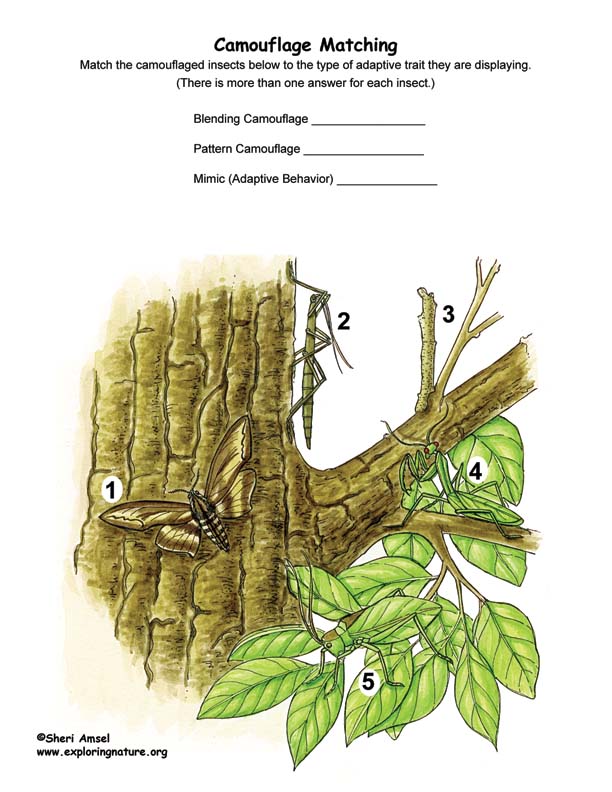

Animals use camouflage or cryptic coloration in many different ways. When an animal’s body color matches its surroundings, it’s called blending camouflage.When an animal has stripes, spots or other markings, these make the outline of their body hard to see and are called pattern camouflage. When an animal hides by looking like the plants it eats (or the plant its prey eats), it’s called disguise.
Some animals mimic the body coloring or actions of poisonous or bad tasting prey to benefit from that protection. Some animals enlarge themselves to discourage predators. Others try to startle a predator with a loud hiss, a flash of color or leaping. This is adaptive behavior.
Try the two activities below to test your understanding of adaptations.

